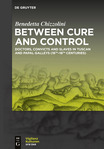Neuerscheinung: Between Cure and Control Doctors, Convicts and Slaves in Tuscan and Papal Galleys (16th-18th Centuries)
von Benedetta Chizzolini
15.10.2025
 Since antiquity, doctors have always been required to be "vigilant" (i.e., extremely attentive), particularly when it comes to any symptoms exhibited and/or complained of by the patient. As outlined in the Hippocratic Oath since antiquity, a doctor’s primary mission is to ensure the patient’s well-being and recovery, irrespective of their social status. However, loyalty to the patient was explicitly subordinated whenever the patient performed an action deemed suspicious or even detrimental to society’s best interests. The goal of this book is, therefore, to delve deeper into the multivalent role and attitude of physicians and surgeons as "experts" in how to interpret symptoms, and how this, in turn, influenced their relationship with their patients, especially when the latter were considered to be "dangerous individuals". This analysis does not seek to further explore Foucault’s concept of the "disciplinary" nature of medicine, but rather uses it as a starting point for analyzing the complex and, so to speak, "ambiguous" nature of the doctor-patient relationship in the early modern period, one which oscillated between cooperation and conflict. To deepen these aspects, this analysis will consider the role and tasks of a figure often neglected by historiography: the galley doctor.
Since antiquity, doctors have always been required to be "vigilant" (i.e., extremely attentive), particularly when it comes to any symptoms exhibited and/or complained of by the patient. As outlined in the Hippocratic Oath since antiquity, a doctor’s primary mission is to ensure the patient’s well-being and recovery, irrespective of their social status. However, loyalty to the patient was explicitly subordinated whenever the patient performed an action deemed suspicious or even detrimental to society’s best interests. The goal of this book is, therefore, to delve deeper into the multivalent role and attitude of physicians and surgeons as "experts" in how to interpret symptoms, and how this, in turn, influenced their relationship with their patients, especially when the latter were considered to be "dangerous individuals". This analysis does not seek to further explore Foucault’s concept of the "disciplinary" nature of medicine, but rather uses it as a starting point for analyzing the complex and, so to speak, "ambiguous" nature of the doctor-patient relationship in the early modern period, one which oscillated between cooperation and conflict. To deepen these aspects, this analysis will consider the role and tasks of a figure often neglected by historiography: the galley doctor.

